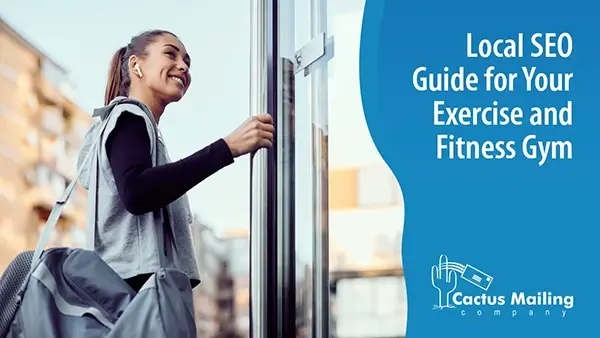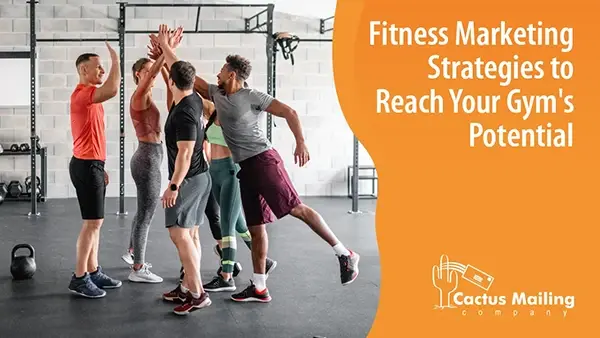We Are Here to Help!
Get pricing details and strategies that will work for your business.
Local SEO is crucial in marketing your exercise and fitness business. With more and more people relying on search engines to find local services, optimizing your online presence is essential for staying ahead of the competition. Tapping into local SEO strategies can increase your visibility on search engine results pages (SERPs) and drive more clients to your facility.
As a fitness business owner, you should focus on fine-tuning your website design and online content to target potential customers in your area effectively. Fine-tuning includes optimizing your website with relevant keywords, improving your site's user experience, and regularly updating your content to keep it fresh and informative.
Remember that for successful local SEO, it's not just about optimizing your website; you should also engage with your community by encouraging reviews, participating in local events, and leveraging social media to connect with potential clients. Read on to learn what strategies you can use to establish a solid online presence and attract new customers to your exercise and fitness business.
Establishing Your Gym's Online Presence
As a gym or fitness studio owner, having a solid online presence is essential to attract more local traffic and grow your business. Here's how you can start:
Optimizing for Exercise and Fitness Local SEO
Focusing on local SEO is crucial for your gym's online visibility. Start by ensuring your Name, Address, and Phone number (NAP) are consistent across the web. Accurate NAP information is essential for both search engines and potential customers:
- Consistent NAP: Ensure that your gym's name, address, and phone number are the same across all online platforms, including your website, social media profiles, and online directories.
- Local keywords: Include local search terms in your website content and metadata to increase your visibility in local search results.
- Localized content: Create content relevant to your local audience, such as blogs about local fitness events or community involvement.
Google My Business and Local Directories
Claiming and optimizing your Google My Business (GMB) listing is essential for increasing your gym's visibility on Google Search and Google Maps. Here are some essential steps to follow:
- Claim your GMB listing: Verify your gym's ownership and ensure all the information on your listing is up-to-date.
- Upload photos: High-quality images help showcase your gym's facilities and give potential customers a virtual tour.
- Gather reviews: Encourage satisfied clients to leave reviews on your GMB listing, as positive reviews can boost your gym's credibility and search rankings.
- Post regular updates: Share information about promotions, events, or gym updates.
- Local directories and citations: Besides GMB, claim and manage your gym's listings on other local directories, such as Yelp or Yellow Pages, ensuring NAP consistency.
|
Platform |
Tips |
|
Google My Business |
Verify, update photos, get reviews, post updates. |
|
Yelp |
Claim listing, ensure NAP consistency, upload photos. |
|
Yellow Pages |
Claim listing, ensure NAP consistency, add descriptions. |
Developing an SEO-Friendly Website
Creating a fitness SEO-friendly website is vital to your gym's online success. Consider the following best practices:
- Mobile-friendly: As more people use their mobile devices to search for gyms and fitness studios, it is crucial to have a mobile-friendly website. Responsive design and fast loading times are essential.
- WordPress: Using a platform like WordPress can make creating and managing a gym SEO-friendly website easier. Numerous plugins and themes are available to optimize your site.
- Schema markup: Implementing schema markup on your website can improve how search engines understand and display your content, leading to better search engine visibility.
- Website content: Create engaging and informative content, such as class schedules, gym facility descriptions, and testimonials, to help potential customers understand your offerings.
- Landing pages: Design localized landing pages targeting specific neighborhoods or demographics to improve your gym's local search visibility.
Fitness Keywords: Research and Implementation
Incorporating a strategic approach to keyword research and implementation is crucial to harnessing the power of technical SEO for a fitness center. This involves identifying potential clients' specific terms and phrases when searching for fitness-related information, classes, or facilities online. By leveraging tools like Google Keyword Planner or Ahrefs, fitness centers can gain insights into the most searched-for keywords within their niche. This step is foundational, as it guides the content creation process, ensuring it aligns with what the target audience is looking for.
Practical Application in the Fitness Industry
- Website Optimization: Integrate the researched keywords naturally into various elements of your fitness center's website. This includes page titles, headings (H1, H2, etc.), meta descriptions, and the body text of your pages. For instance, if "yoga classes near me" is a highly searched term, a page on your site dedicated to yoga classes should include this phrase in a way that reads naturally and provides value to the reader.
- Blog Content Creation: Regularly publish blog posts that address popular fitness queries, incorporating the targeted keywords. For example, if "best exercises for weight loss" is a trending search, a detailed blog post can help draw organic traffic to your site. By providing valuable content that aligns with what people are searching for, you establish your fitness center as a credible source of information, encouraging visitors to explore your services further.
- Image Optimization: Beyond text, optimizing images with relevant keywords can enhance your SEO efforts. This includes using descriptive, SEO keyword-rich file names and alt tags for images. For a fitness center, photos of equipment, classes in action, or instructional workout graphics should include alt tags that describe the image while incorporating target keywords, such as "high-intensity interval training class."

Specific Industry Examples
- Local SEO for Gyms: A gym targeting local clients can focus on local search terms, such as "gyms in [City Name]" or "fitness center near me." By optimizing their Google My Business listing and ensuring their website content includes local keywords, they can improve their visibility in local search results, attracting more nearby clients.
- Online Fitness Programs: For businesses offering online workout programs or virtual personal training, keywords related to online fitness solutions are essential. Phrases like "online yoga classes" or "virtual personal training services" should be prominently featured in their content strategy. This approach helps attract individuals looking for home workout options.
- Specialized Fitness Centers: Specialized fitness centers, such as those focusing on Pilates, CrossFit, or specific sports training, should tailor their SEO keyword strategy to reflect their niche. By targeting keywords specific to their specialization, such as "CrossFit for beginners" or "Pilates studio [City Name]," they can attract a more targeted audience interested in their specific offerings.
Building Authority with Quality Content
Establishing authority and a loyal following within the fitness industry can be achieved through content marketing that is both informative and accurate, as well as engaging and visually appealing. Here are some specific examples of how to leverage quality content for building authority:
Fitness Blog Posts
- Specialization: A fitness center specializing in strength training might publish detailed blog posts on topics such as "5 Essential Strength Training Exercises for Beginners" or "How to Break Through Your Weightlifting Plateau." These posts should be grounded in scientific principles, offering readers routines and explanations on why they work and how to perform them correctly.
- Nutrition and Wellness: Another avenue is focusing on holistic health, including nutrition advice tailored to fitness goals. A post like "Nutrition for Muscle Recovery: Foods to Eat After Your Workout" can attract readers looking for comprehensive wellness tips.
Client Success Stories
- Personal Transformation Stories: Sharing testimonials and before-and-after stories of clients who have achieved their fitness goals can be highly persuasive. For example, a testimonial video or blog post featuring a client who completed a 12-week body transformation program at your gym provides social proof of the effectiveness of your services.
- Diverse Clientele: Highlighting a range of success stories, from weight loss to improved athletic performance, caters to a broader audience and demonstrates the versatility of your fitness programming. By showcasing achievements across different age groups, from vibrant teens to inspiring seniors, your stories underscore the adaptability of your programs to meet the unique fitness needs of clients at any stage of life.

Instructional and Facility Showcase Videos
- Workout Demonstrations: Create high-quality videos demonstrating proper form for various exercises, especially those unique to your fitness center or methodology. For instance, a CrossFit gym might produce video content focusing on complex Olympic lifts, providing value through expert instruction.
- Facility Tours: Virtual tours of your gym or fitness center, highlighting unique equipment, amenities, or classes offered, can entice potential members by giving them a glimpse into the environment and community they could join.
Enhancing Readability and Engagement
Ensure your content is well-structured and easy to read. Break up large blocks of text with subheadings, bullet points, or numbered lists, and use appropriate formatting like bold, italics, and underlines where necessary. You can also use:
- Multimedia: Incorporate images, infographics, or short video clips within your content to break up text and illustrate points more vividly. For example, a blog post on "Top 10 Ab Exercises" could feature GIFs demonstrating each exercise, making the content more interactive and easy to follow.
- Interactive Elements: Include interactive elements like quizzes (e.g., "What Type of Workout Is Best for Your Goals?") or calculators (e.g., "Calorie Burn Calculator"). These tools engage users directly, encouraging them to spend more time on your site and perceive your brand as a helpful resource.
Engaging Locally and Enhancing Visibility
Engaging locally and enhancing your visibility is crucial for connecting with potential clients in your area. By optimizing your fitness content for local search, you're taking a significant step towards drawing in those closest to you. Here's how you can keep your focus local:
- Incorporate location-specific keywords in your content, such as "[your city] fitness center" or "[your area] personal trainer." This strategy helps your fitness website rank higher in search results when potential clients search for fitness services in your location.
- Integrate local landmarks or events into your content to build relevance. Mentioning how your fitness center is just a stone's throw away from well-known local landmarks or participating in local fitness events can create a more relatable and community-oriented image of your brand.
- Participate in community events and make sure to share these experiences on your blog or social media. Whether it's a local marathon, a charity workout session with a fitness trainer, or a health fair, being involved in these events not only builds your local network but also showcases your commitment to the community.
- Collaborate with local businesses to cross-promote and establish connections within your neighborhood. This could involve setting up joint fitness challenges, wellness workshops, or special discounts for customers who frequent both businesses. Such collaborations can widen your reach and embed your brand more deeply into the local community fabric.
- Optimize your Google Business Profile to enhance local search visibility. Make sure your profile is complete, up-to-date, and rich with images of your facilities and services. Encourage your satisfied clients to leave positive reviews on Google, Yelp, or other relevant review platforms. These reviews act as powerful social proof, improving your local search rankings and making your fitness studio more appealing to potential clients.

Conclusion
A solid online presence is becoming more important as the fitness business evolves. Incorporating a well-researched SEO strategy improves a fitness center's search engine rankings and enhances user experience by providing relevant and valuable content. This dual benefit helps attract potential clients and establish the center as a leader in the fitness industry.
Effective SEO involves persistence, adaptability, and a deep awareness of your local market. To help your gym stand out online and reach a potential customer, supplement search engine optimization with social media and Google Business Profile. Ultimately, your local SEO strategy can significantly increase traffic and memberships.
Our direct mail postcards have helped various businesses get leads, boost brand awareness, and grow revenue. Let us help you create a marketing postcard design to achieve your marketing goals!

 Cactus Mail Team: May 15, 2024
Cactus Mail Team: May 15, 2024



